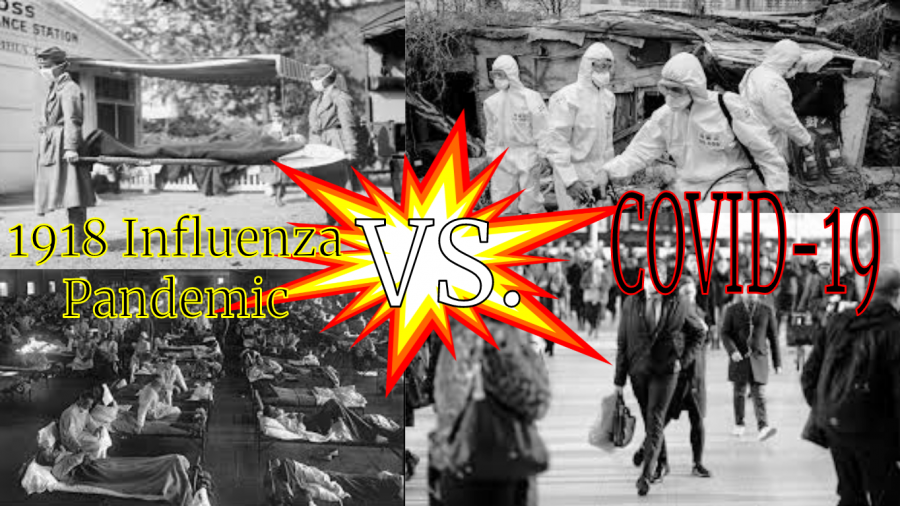1918 Pandemic vs. COVID-19
April 17, 2020
The spread of COVID-19 has become a world health emergency. An outbreak like this hasn’t happened since the 1918 influenza pandemic, also known as the Spanish Flu. The 1918 influenza pandemic affected a third of the Earth’s population. The COVID-19 is currently sweeping across the planet and disturbing our lives.
The 1918 influenza pandemic was first identified by the United States military and affected about 500 million people. The death rate was high for people younger than five years, between the ages of twenty and forty, and those over sixty-five. There was no vaccine, so prevention resulted in non-pharmaceutical interventions like isolation, quarantine, good personal hygiene, and limited public gatherings. The 1918 influenza pandemic got its name, ‘the Spanish Flu’ because Spain was a neutral country in World War I and provided news about the Spanish Flu, whereas the rest of the world was not releasing news due to the war.
Mrs. Medley’s (mother of Mrs. Lauren Horvath, WMS Teacher) family was one of the many affected families of this pandemic. “My mother was six years old in 1919,” recalls Mrs. Medley, “The family of five children were excited and looking forward to Christmas.” The oldest girl, Margret (16) brought the flu home from school. “Then my mother came down with it. Then their mother and sister Elizabeth (13), … Their mother and sister Elizabeth died within minutes of each other just before Christmas.” Christmas, which was their mother’s favorite holiday, now became a very hard time for the remaining family members.
The 1918 influenza pandemic wiped out entire families and had a decimating effect on society. Basic services like mail delivery and garbage collection were shut down due to sick workers. Mrs. Medley explains her family remembers, “neighbors leaving food on the steps of their back door. Everyone was afraid.”
The COVID-19 respiratory virus originated from animal to person spread in Wuhan, China. The disease is now spreading across the world from person to person spread. The symptoms are fever, cough, and shortness of breath and may appear 2-14 days after exposure. The people most likely affected are older adults and people with severe medical diseases. Like the 1918 influenza, to prevent further spread, we must resort to non-pharmaceutical interventions.
The COVID-19, like the 1918 influenza, is disrupting families, the economy, and our day to day lives. But the COVID-19 comes in an era with advanced medical technology and ways to continue daily things, like education online. We have ways to communicate and learn that were not available for the 1918 pandemic.
Stay home and stay safe. We’re living through history.
Works Cited
“1918 Pandemic (H1N1 Virus).” Centers for Disease Control and Prevention, Centers for Disease Control and Prevention, 20 Mar. 2019, www.cdc.gov/flu/pandemic-resources/1918-pandemic-h1n1.html.
Andrews, Evan. “Why Was It Called the ‘Spanish Flu?’.” History.com, A&E Television Networks, 12 Jan. 2016, www.history.com/news/why-was-it-called-the-spanish-flu.

lucy kaiser • Apr 24, 2020 at 10:12 am
Nice article Natalie! I liked how you included anecdotal evidence about Mrs. Horvath’s family and how they were involved and affected by the Spanish Flu!